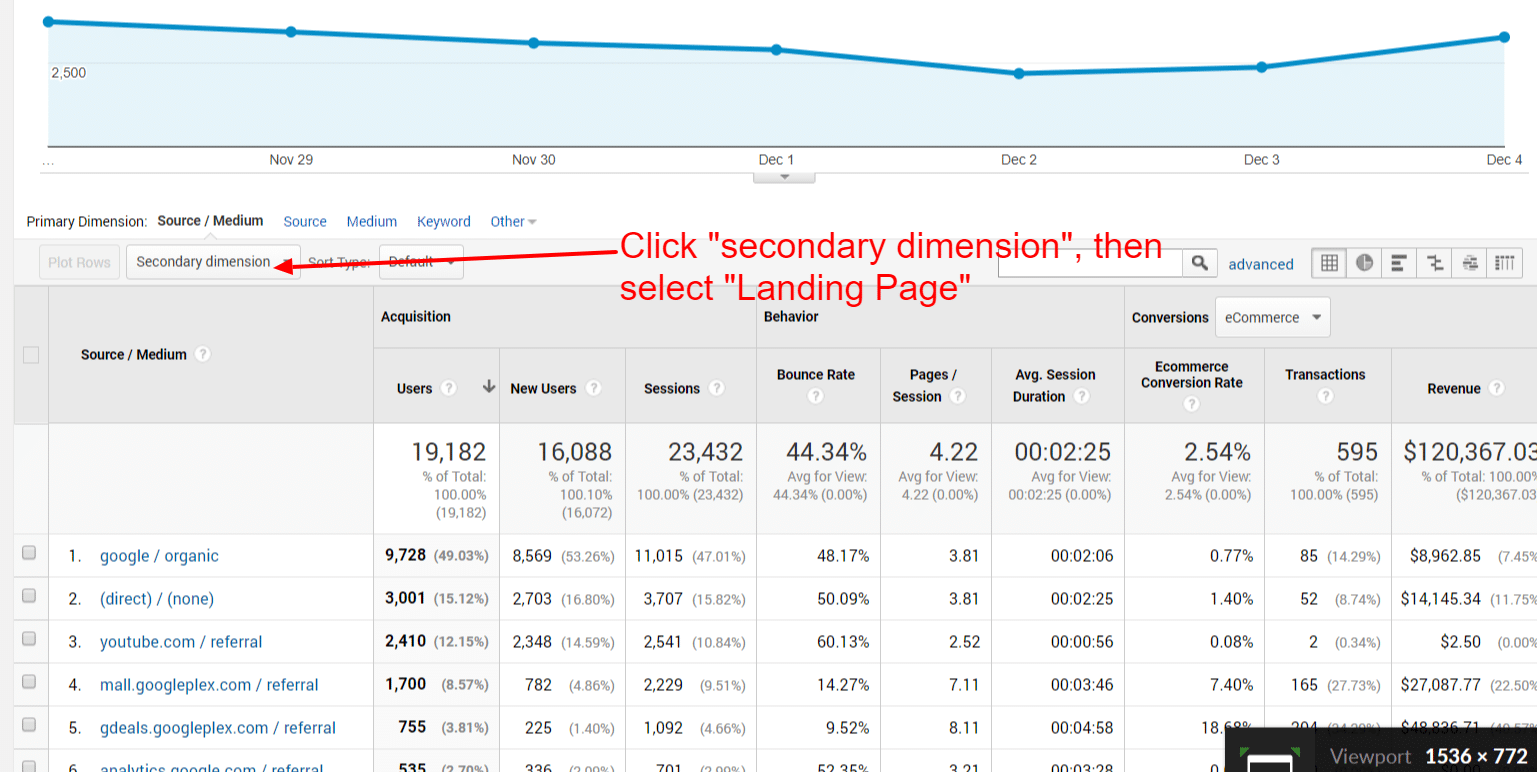Optimizing SEO with Secondary Dimension in Google Analytics
Optimize Reporting Accuracy With Second Measurement in Google Analytics
Understanding just how to take full advantage of reporting precision with secondary measurements in Google Analytics can considerably enhance the deepness of understandings acquired from information analysis. By integrating secondary dimensions purposefully, marketers can reveal concealed patterns and relationships that may not be immediately evident when examining key metrics alone.
Comprehending Additional Measurements in Google Analytics
To improve data evaluation and gain much deeper understandings into customer actions, understanding second dimensions in Google Analytics is critical. Secondary dimensions enable customers to segment and better explore information beyond the key dimension selected. By including second dimensions, analysts can fine-tune their reports to expose even more thorough info about customer communications on an internet site. For circumstances, while the key dimension may present the total number of page sights, adding a second dimension such as 'source/medium' can supply insights into where the web traffic stemmed from. This added layer of details allows marketers to assess the efficiency of various advertising and marketing projects or channels in driving traffic to the web site.
In addition, comprehending additional dimensions is crucial for developing much more tailored reports tailored to particular service goals. By choosing the right mix of secondary and primary measurements, experts can reveal patterns, trends, and correlations that might otherwise continue to be surprise. This nuanced strategy to information analysis empowers companies to make enlightened choices based upon a thorough understanding of customer habits across various dimensions.

Just How to Use Second Dimensions
When leveraging secondary dimensions in Google Analytics, the sensible application entails choosing particular data criteria to further refine understandings past the primary measurement's extent. To apply secondary dimensions successfully, start by accessing the report or dataset where you want to dive much deeper into the information. Keep in mind that additional measurements help offer context and granularity to your key dimension information, allowing you to draw out even more significant and actionable insights from your Google Analytics records.
Leveraging Secondary Dimensions for Insights
Using additional dimensions in Google Analytics enables an extra thorough evaluation of information, offering beneficial understandings past the main dimension's range. By leveraging secondary dimensions, users can dive deeper into the performance metrics of their web site or application, discovering covert patterns and trends that might not be quickly apparent when just considering primary measurements.
One key benefit of making use of secondary dimensions is the capability to section and filter information more exactly. This can assist analysts and marketers much better recognize the behavior of certain user sections, such as new visitors versus returning site visitors, or website traffic coming from various geographical locations.
In addition, additional dimensions make it possible for users to compare and contrast numerous information points within the very same record, providing a much more all natural sight of performance (Secondary Dimension in Google Analytics). For instance, coupling the main measurement of landing web pages with secondary dimensions like our website gadgets or demographics can reveal which web pages are most effective in engaging customers on different tools or from various market groups.
Essentially, leveraging additional measurements in Google Analytics equips individuals to draw out richer insights from their information, causing even more informed decision-making and eventually, enhanced performance.
Best Practices for Secondary Measurements
When analyzing information in Google Analytics, integrating additional measurements successfully boosts the depth of insights derived from the primary metrics. Selecting pertinent additional dimensions helps in offering context and a clearer understanding of the data being taken a look at.
In addition, it is suggested to restrict the variety of second measurements utilized in a single record to stay clear of frustrating the evaluation with excessive information. Concentrating on a few crucial secondary dimensions at once can cause more actionable and focused insights. Additionally, take into consideration trying out with various combinations of secondary and main dimensions to discover distinct fads and patterns that might not appear when looking at the information in isolation.
Advanced Analysis Methods With Secondary Dimensions
Checking out intricate data connections with the strategic application of additional dimensions can reveal nuanced insights that boost the deepness of analysis Click Here in Google Analytics. By incorporating secondary dimensions with main information sets, innovative evaluation methods can be utilized to draw out beneficial information. One such method is accomplice evaluation, where secondary dimensions enable for the segmentation of individuals into teams sharing typical attributes. This technique enables a much deeper understanding of customer actions patterns gradually, helping in the recognition of patterns and the evaluation of advertising and marketing projects' performance.
In addition, second measurements can enhance the evaluation of conversion paths by providing extra context. Comprehending the various touchpoints a user engages with prior to converting can be crucial in optimizing the customer trip - Secondary Dimension in Google Analytics. By utilizing second dimensions to dive into specifics such as traffic sources or tools made use of, marketing professionals can customize strategies to target high-converting networks effectively
Final Thought

To enhance data analysis and gain much deeper understandings into user habits, comprehending second dimensions in Google go to my site Analytics is important - Secondary Dimension in Google Analytics. Second measurements allow users to sector and further study information beyond the main dimension picked. While the primary measurement might show the overall number of web page sights, including an additional measurement such as 'source/medium' can provide insights right into where the website traffic originated from.When leveraging additional dimensions in Google Analytics, the useful application entails picking details data criteria to additional refine understandings beyond the main measurement's extent. Bear in mind that additional dimensions assist provide context and granularity to your primary dimension information, enabling you to draw out more significant and workable understandings from your Google Analytics records